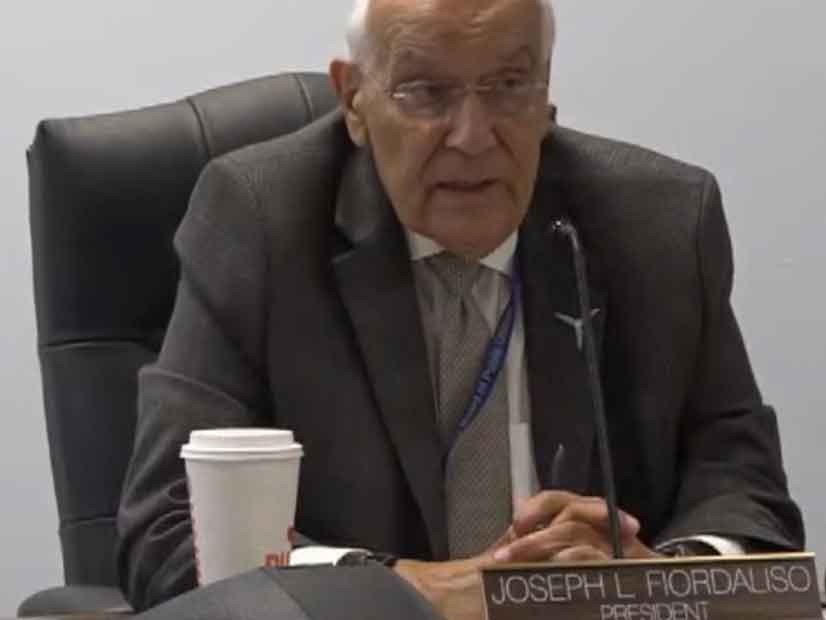The New Jersey Board of Public Utilities voted unanimously on Wednesday to accept the final version of a staff report recommending the state continue in PJM’s capacity market — for now — instead of adopting a “New Jersey-centric” model under the fixed resource requirement (FRR) alternative.
Joseph DeLosa, chief of the BPU’s Bureau of Federal and Regional Policy and one of the authors of “Alternative Resource Adequacy Structures for New Jersey,” told the board the report provides a “detailed roadmap” for PJM to better incorporate clean energy considerations and engage with state, regional and federal policymakers “to make it happen.”
DeLosa said that PJM incorporating New Jersey’s clean energy goals is the most efficient way to provide “reliable, affordable and carbon-free electricity.” While existing regional wholesale market structures have fulfilled their design objectives to maintain reliability at competitive prices, he said, they also have lagged in addressing the state’s clean energy policies.
PJM’s proposal to replace the minimum offer price rule (MOPR) makes it “premature” for New Jersey to consider leaving the RTO, according to DeLosa. (See PJM Board Approves MOPR Rollback.)
DeLosa said an integrated clean capacity market (ICCM) design would allow states to directly leverage the competitive efficiencies of the RTO for the achievement of their clean energy goals. For example, a PJM-wide implementation of an ICCM could save New Jersey ratepayers alone approximately $220 million annually and increase renewable energy from 50% to 59% of customer demand and clean energy, including nuclear, from 84% to 92% by 2030.
The report also recommends a pause on the adoption of a go-it-alone approach in which New Jersey would seek to achieve its clean energy objectives, outside of PJM’s capacity market.
PJM’s proposal may offer one avenue for New Jersey to express its desires for a new market design. However, PJM may not achieve a “satisfactory resource adequacy” market in a time frame conducive to New Jersey’s clean energy goals. Therefore, DeLosa said the state must continue to examine using an FRR structure to implement a New Jersey or multistate ICCM. However, staff recommended tabling it for consideration until May 2022.
“Our staff is cognizant that the realities of climate change do not allow for never-ending stakeholder discussion at PJM,” DeLosa said. The proposal’s outcome at FERC is also critical to determining whether New Jersey should pursue FRR-based resource adequacy solutions.
BPU President Joseph Fiordaliso said the MOPR’s “dire” impacts on future capacity costs “hopefully are not going to come to fruition.”
“With the movements by PJM and with the receptiveness we believe at this point from FERC, our hope is that MOPR is going to see its final days,” Fiordaliso said.
He added that while the report recommends a pause on any decision to leave the PJM capacity market, “MOPR repealed by itself” is not sufficient enough.
“During the next 12 months, we will work with PJM and the [Biden] administration on market design changes aimed squarely at maintaining reliability and reducing the cost of clean energy,” Fiordaliso said. “Additionally, we will continue to work with our fellow state commissions and utilities to develop a robust backup plan to ensure New Jersey remains the leader in clean energy.”
Rule to Establish New Solar Incentive Program Approved
The BPU on Wednesday also approved a rule establishing the successor solar incentive program (SuSI) that creates a framework for new long-term incentives in the future.
SuSI succeeds the Solar Renewable Energy Certificate (SREC) registration program, sunset in April 2020 after more than 15 years of measurable success. It allowed New Jersey to become one of the leading solar energy producers in the country despite its relatively small land size and available space.
The rule comes on the heels of Gov. Phil Murphy signing a bill last week aimed at boosting the state’s grid-scale solar capacity to help meet a deployment goal of 17 GW by 2035. (See NJ Grid-scale Solar Bill Signed by Murphy.) The bill outlines two different incentive structures for projects larger and smaller than 5 MW.
The BPU will hold a special meeting on July 28 on implementing SuSI.
Agreement Lowering PSE&G Tx Rates Signed
Finally, the BPU signed a settlement agreement with Public Service Electric and Gas to lower the company’s return on equity for existing transmission services to 9.9% from 11.18%, saving New Jersey ratepayers approximately $140 million in the first year.
Commissioners did not discuss the settlement agreement during the open meeting, which started with an executive session that included a “Matter of the Approval of Settlement Agreement.” They later unanimously approved the settlement agreement when the open meeting resumed without discussion. The BPU sent out a press release hours after the meeting’s conclusion to announce it.
As part of the settlement agreement, PSE&G would file to lower the rates it charges for transmission while the BPU would agree not to request further reductions for three years. The board anticipates that the utility will file with FERC this week.



